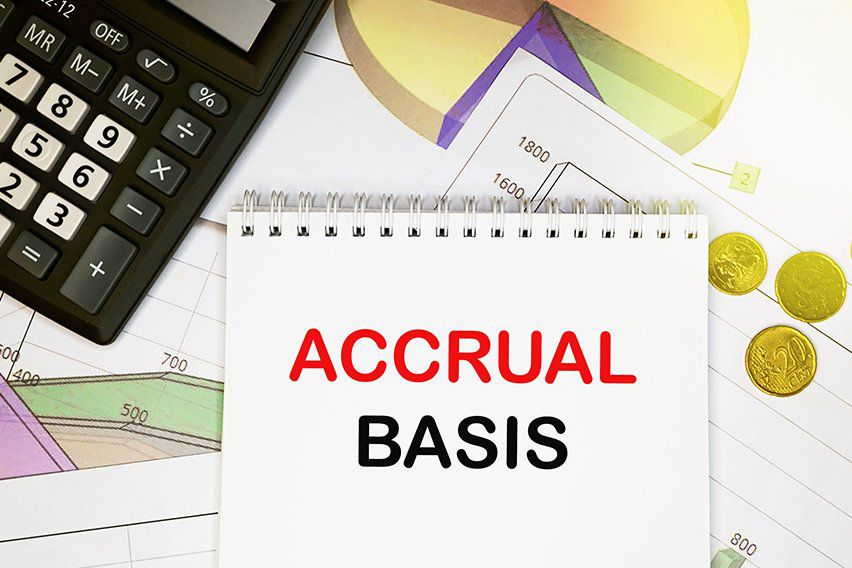Accrual basis accounting is the standard method of accounting; the SEC mandates all public corporations to utilise it. It is also the only system that is compliant with US GAAP.

There’s a good explanation behind this. Despite the fact that money measurement is a fundamental accounting concept, accrual accounting records activities that do not involve any cash. This provides a more full view of a company’s finances. That is why so many businesses choose accrual accounting.
Table of Contents
Definition of Accrual Basis Accounting
Cash may be essential. However, accrual basis accounting is the recommended technique in accounting. This is why.
A company’s life cycle is indefinite. It’s difficult to estimate how long it will persist at first. However, monitoring its development requires the specification of time intervals and points. As a result, accounts are often created at convenient time periods such as a week, month, or year. Separate accounting periods enable transactions in one period to be separated, analyzed, and compared to transactions in another. However, this causes problems with timing since it is not always apparent which accounting period a transaction should be recorded in.
To address these challenges, accrual accounting employs a few principles:
To begin, the revenue recognition principle requires revenue to be recognised in the accounting period in which it is generated, even if no cash is received.
Second, according to the matching principle, costs should be reported in the same accounting period as the revenues to which they contributed. Thus, if advertising money increased sales, the sales and advertising expenditure should be recognised in the same accounting period, even though the cash from the sales and the payment for the advertising may come in separate accounting months.
The matching concept lies at the heart of accrual accounting. It eliminates the flaws of cash basis accounting, in which large changes in cash revenues or cash payments make calculating and comparing net income problematic.
Advantages and disadvantages of Accrual Basis
Advantages
Expenses are matched to revenues.
Provides a more realistic view of financial performance and position
Displays assets and liabilities that are not included in the cash basis balance sheet.
According to GAAP
Disadvantages
Accounting that is more involved than cash basis accounting
Liability for income taxes even when no cash has been received
Accounting Methods: Cash Basis vs. Accrual Basis
Revenue is recorded only when cash is received under cash basis accounting, while costs are recorded only when they are paid. Transactions in accrual accounting are reported in the accounting periods in which they occur, even if no cash is involved. Revenues are recognised when earned, and expenses are recognised when incurred.
Since cash basis accounting is confined to cash transactions, it omits several significant non-cash financial activities, such as accruals and deferrals. Accruals are of two types: revenues earned but not yet received in cash and expenses incurred but not yet paid. Furthermore, there is no inventory in cash basis accounting. GAAP does not permit cash basis accounting because it contradicts both the revenue recognition principle and the matching principle. Nonetheless, the IRS allows businesses with gross receipts of less than $25 million to use cash basis accounting.
When Should You Use Accrual Basis Accounting?
Accrual accounting should be employed by organisations that have deferrals and accruals in their financial operations.
Deferrals
Deferrals occur when there is an advanced exchange of currency. These early monetary transactions might be both income and expenditure.
For example, if a customer pays $2,500 before the goods are delivered, the amount is recorded in the unearned revenues account as a revenue deferral:
Debit Credit
$3,000 in Prepaid Expenses
Bank $ 3,000
There is no increase in revenues. The unearned revenues account is a balance sheet account. The credit shows the company now has a liability; it owes the customer value to the tune of $2,500.
Again, in June, a corporation may pay $3,000 for consultant services in July, August, and September. This transaction would be documented as follows: Debit Credit
$3,000 in Prepaid Expenses
3,000 dollars in the bank
Prepaid Expenses is an account on the balance sheet. The debit indicates that the corporation now owns a $3,000 asset, which reflects the task that the consultant must do.
Accruals
Accruals are also classified into two types: income and cost. Accrued revenues are revenues that have been earned but have not been recorded in the accounts in the usual manner; for example, services may have been performed but not billed. Debit Credit
$1,500 in accounts receivable
$1,500 in revenue (accrued)
Accrued costs are expenses incurred but not paid for. For example, perhaps an invoice from the vendor or provider has yet to be received. Debit Credit
2,000 dollars for landscaping services
Accounts Receivable
2,000 dollars
